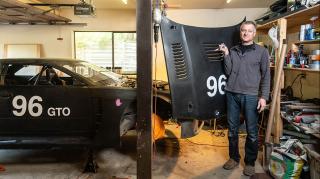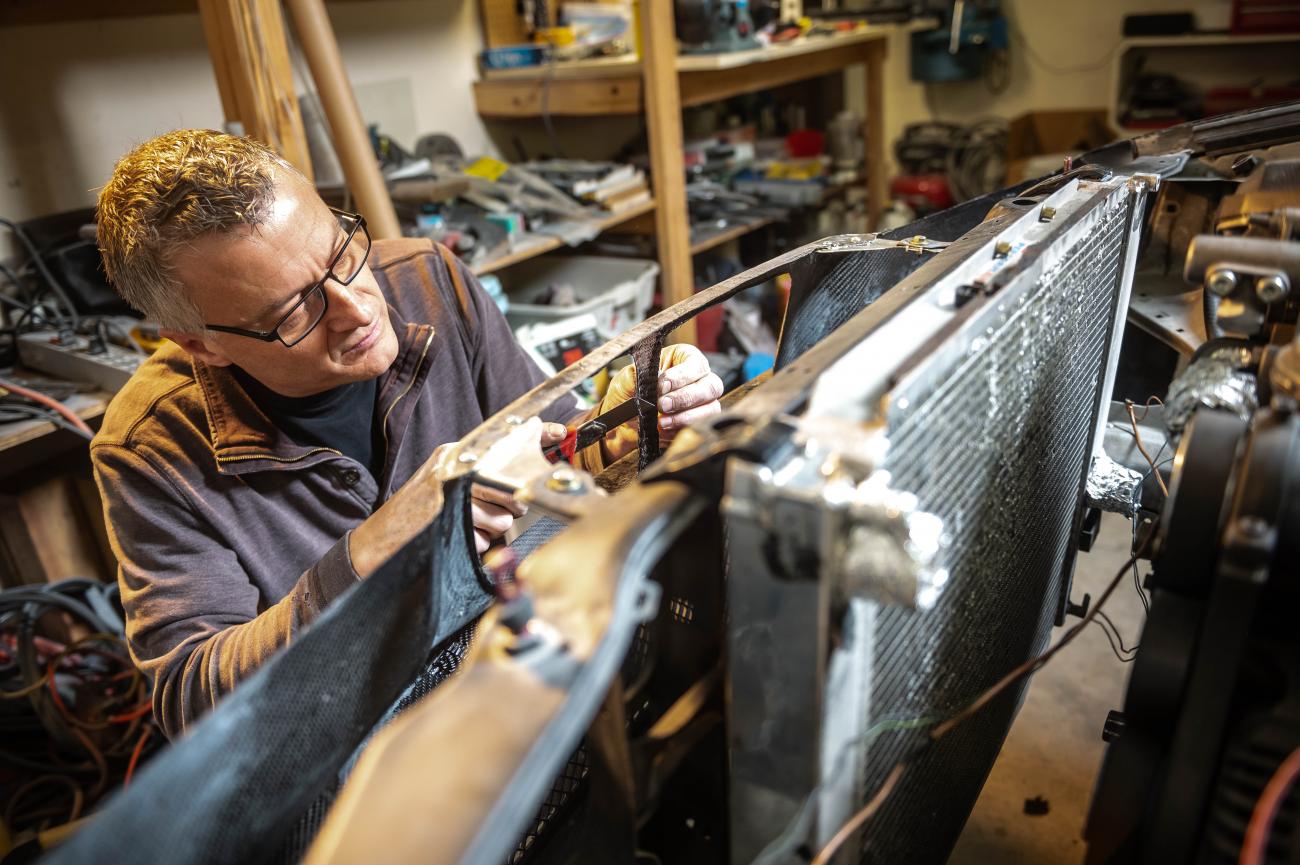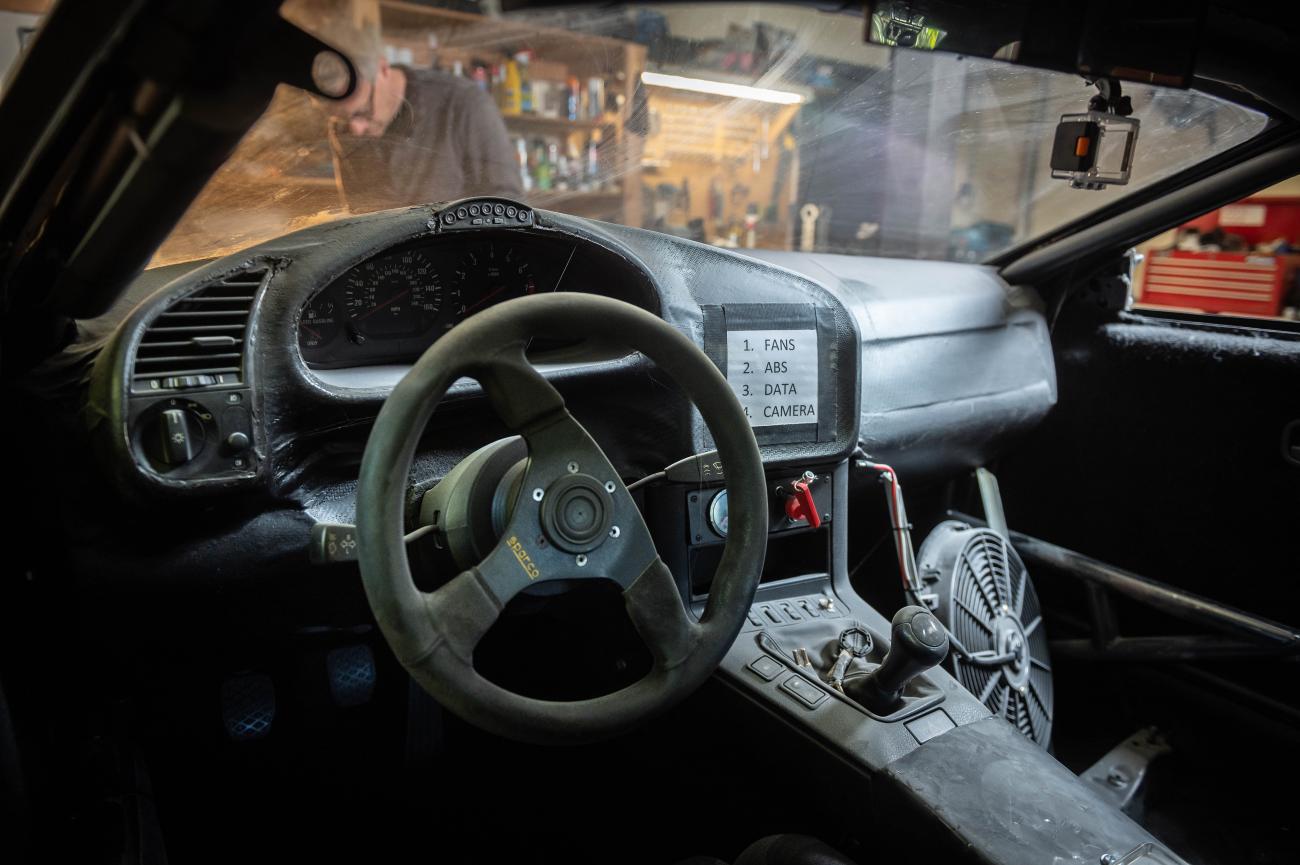Mastering the physics of racing cars


Director of Engineering Physics and Professor of Physics and Astronomy, Andre Marziali, has his eye on breaking a speed record at the Knox Mountain Hill Climb in Kelowna this May. As the longest, annually-running paved hill climb in North America, the event attracts top race car drivers from throughout the Pacific Northwest.
Andre already won the race back in 2018 and holds the speed record in the SP4 class (production cars with a limited number of modifications) since 2014. But he has something many other racers don’t – engineering and physics expertise — which he is putting to use to make improvements to his car. So now he is in a new class and only seven-tenths of a second behind that record.
“I lightened my car by changing a lot of its structure to carbon fibre and replacing the windows with plastic,” Andre explains. “But once I did that, I had to move to GTO class - the fastest of the production car classes. If I take that record, I'll be the fastest ‘door slammer’ (production cars have doors) ever up the hill.”
"If I take that record, I'll be the fastest ‘door slammer’ (production cars have doors) ever up the hill.”
Andre Marziali

Andre’s racing career has its roots here at UBC. While he has been fixing cars since he was a teenager, he hadn’t actually thought about racing them until he met students in the UBC Sport Car Club at Club Days in 2005.
“I had no idea that you could get into racing cheaply until I met them,” he said. “I had just bought a BMW M3 that I was fixing up, and they taught me that for just 50 bucks, I was able to bring the car out and learn to race it!”
Andre continues to be involved with the club today, teaching Autocross 101 to its members a couple of times per year and helping to write the club’s timing software. His daughter Jenny – a first-year UBC Engineering student — has also caught the racing bug, and is now the club’s co-president.
Andre is an alumnus of the same program he directs today. He received his B.A.Sc. in Engineering Physics from UBC in 1989, before heading to Stanford University to do his Ph.D. in Physics.
His connection to the UBC community has also given him the opportunity to take his passion for car racing to the international stage. Another Engineering Physics alumnus, Doug Dean, read that Andre raced cars in a UBC publication and contacted him.
“Doug and his wife race Ferraris on Formula 1 tracks,” explains Andre. “He offered me the opportunity to race his Ferrari 488 Challenge car, and of course I said yes. I raced his car on two tracks in Italy, one in France, and this year raced it at the historic Monza track near Milan. I have also had a few discussions with his race team to see if there are opportunities for me to apply physics and engineering principles to improve their performance.”
The professor-turned-racing driver says that his physics expertise definitely gives him a leg up in modifying cars; “Application of physics is not as common in the grass-roots racing community as it would be in professional racing. This allows substantial opportunity for gaining an advantage in events like the Knox Hillclimb, by utilizing an understanding of physics in car setup and design.”
"Application of physics is not as common in the grass-roots racing community as it would be in professional racing."
Andre Marziali

Andre is eager to share his expertise and perspective on this topic. He created a three-hour lecture on the physics of racing, which is up on YouTube, and is in the process of building a lecture series on the topic for UBC students. If he can develop it enough, he says he might even make it into a full course.
After May’s race in Kelowna, Andre will be applying his knowledge in new ways. He will build an electric or hybrid car from the ground up and try and take the long-held record for custom-built cars.
For now, though, his eye is on that hill. “It’s terrifying, but in a good way,” he says. “Going 200 kilometers per hour into turns is intense!”
Find the latest news, updates, events, and useful dates from across UBC, curated for faculty and staff by Internal Communications.
Access a library of resources from multiple UBC websites, all in one place.